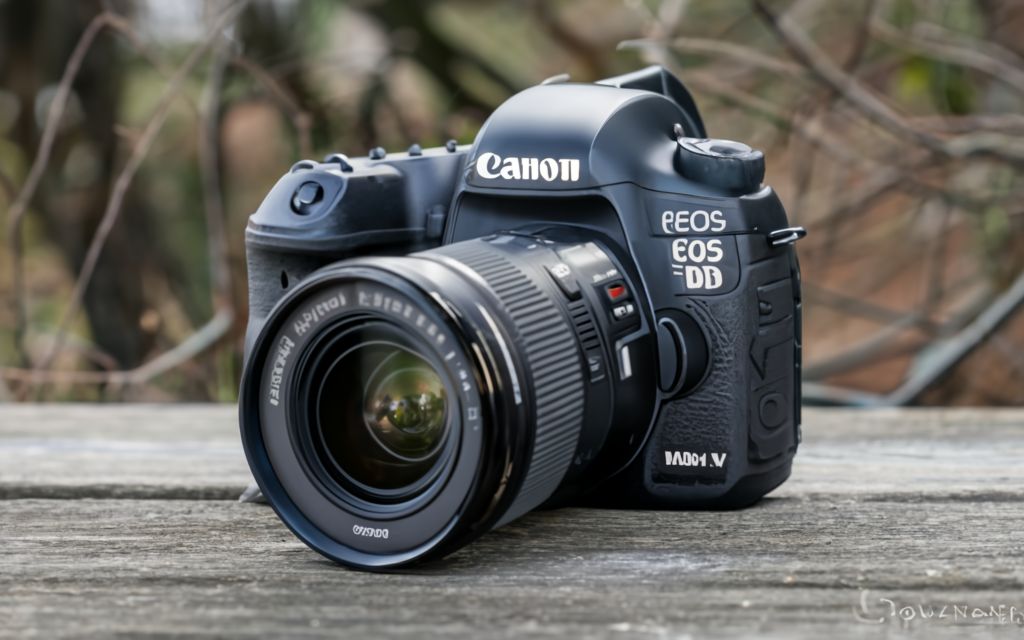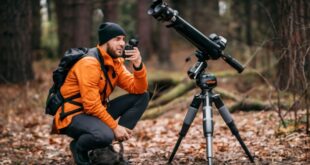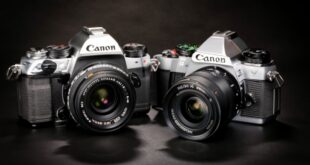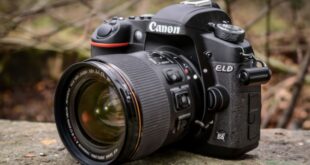Introduction:
Hello there, camera enthusiasts! Are you ready to dive into the world of DSLR cameras and explore their specifications in detail? In this article, we will compare the key features of seven popular DSLR cameras, helping you make an informed decision when purchasing your next camera. So, grab a cup of coffee and get ready to embark on this exciting journey!
1. Nikon D850 📷
The Nikon D850 is a powerful full-frame DSLR camera, boasting a whopping 45.7 megapixels. This high-resolution sensor allows for incredible detail and sharpness in your photographs. Additionally, the D850 offers an excellent dynamic range, enabling you to capture stunning images even in challenging lighting conditions.
2. Canon EOS 5D Mark IV 📷
If you’re a Canon fan, the EOS 5D Mark IV should be on your radar. With its 30.4-megapixel sensor, this camera delivers exceptional image quality. Its advanced autofocus system ensures accurate and fast focusing, making it ideal for capturing action-packed moments. Moreover, the 5D Mark IV offers impressive video capabilities, enabling you to shoot high-quality footage.
3. Sony Alpha A7 III 📷
The Sony Alpha A7 III is a mirrorless camera that rivals many DSLRs in terms of performance. Equipped with a 24.2-megapixel sensor, it excels in both photography and videography. The A7 III’s remarkable low-light capabilities and five-axis image stabilization system make it a favorite among professional photographers and videographers.
4. Nikon D7500 📷
If you’re looking for a versatile camera that strikes a balance between performance and affordability, the Nikon D7500 might be the perfect choice. With a 20.9-megapixel sensor, it offers excellent image quality and performs exceptionally well in low-light situations. The D7500’s advanced autofocus system and fast continuous shooting speed make it great for capturing fast-moving subjects.
5. Canon EOS Rebel T7i 📷
The Canon EOS Rebel T7i is an entry-level DSLR camera that packs a punch in terms of features. With a 24.2-megapixel sensor, it delivers impressive image quality and sharpness. The T7i’s intuitive touchscreen interface and beginner-friendly functionalities make it an excellent choice for photography enthusiasts who are just starting their journey.
6. Sony Alpha A6400 📷
The Sony Alpha A6400 is a compact and lightweight mirrorless camera that doesn’t compromise on performance. Its 24.2-megapixel sensor captures stunning images with great detail. The A6400’s real-time autofocus tracking and high-speed continuous shooting ensure you never miss a moment, making it ideal for sports and wildlife photography.
7. Canon EOS 90D 📷
The Canon EOS 90D features a 32.5-megapixel sensor, providing exceptional image quality and resolution. This camera’s advanced autofocus system and high-speed continuous shooting make it perfect for capturing fast-paced action. The EOS 90D also offers impressive video capabilities, making it a versatile choice for both photographers and videographers.
Advantages and Disadvantages of DSLR Camera Specifications:
Advantages:
1. Image Quality: DSLR cameras produce high-resolution images with excellent detail and color accuracy, allowing you to capture stunning visuals.
2. Interchangeable Lenses: The ability to swap lenses gives you the flexibility to adapt to different photography genres and achieve desired results.
3. Manual Controls: DSLR cameras offer extensive manual controls, allowing you to have full creative control over your images and explore various shooting techniques.
4. Optics and Accessories: The DSLR market is flooded with a wide range of lenses, flashes, and other accessories, giving you endless possibilities for experimentation and customization.
5. Low Light Performance: Many DSLR cameras excel in low-light situations, thanks to their larger sensor sizes and advanced noise reduction algorithms.
6. Durability: DSLR cameras are built to withstand rugged conditions, making them suitable for outdoor and adventure photography.
7. Battery Life: DSLR cameras typically have longer battery life compared to mirrorless counterparts, ensuring you can keep shooting without interruptions.
Disadvantages:
1. Size and Weight: DSLR cameras are generally bulkier and heavier than mirrorless cameras, which can be inconvenient for travel or casual everyday use.
2. Price: DSLR cameras and their lenses can be relatively expensive, especially if you opt for higher-end models or professional-grade lenses.
3. Complex Menu Systems: As DSLR cameras offer extensive features and settings, navigating through the menus and customizing settings may require a learning curve.
4. Limited Video Features: While many DSLR cameras have improved video capabilities, they still lag behind dedicated video cameras in terms of advanced video features and autofocus performance.
5. Noise: DSLR cameras may produce more audible noise due to the mechanical movements of their mirror and shutter mechanisms.
6. Limited Live View Experience: DSLRs primarily rely on optical viewfinders, which may limit your ability to preview exposure, focus, and post-processing effects in real time.
7. Continuous Autofocus: Although DSLRs offer continuous autofocus, the speed and accuracy may not be as advanced as in some mirrorless models.
| Camera Model | Megapixels | Autofocus Points | ISO Range | Continuous Shooting Speed | Video Resolution |
|---|---|---|---|---|---|
| Nikon D850 | 45.7 | 153 | 64-25600 | 7 fps | 4K |
| Canon EOS 5D Mark IV | 30.4 | 61 | 100-32000 | 7 fps | 4K |
| Sony Alpha A7 III | 24.2 | 693 | 100-51200 | 10 fps | 4K |
| Nikon D7500 | 20.9 | 51 | 100-51200 | 8 fps | 4K |
| Canon EOS Rebel T7i | 24.2 | 45 | 100-25600 | 6 fps | 1080p |
| Sony Alpha A6400 | 24.2 | 425 | 100-32000 | 11 fps | 4K |
| Canon EOS 90D | 32.5 | 45 | 100-25600 | 10 fps | 4K |
Frequently Asked Questions (FAQ):
1. Are DSLR cameras better than smartphones for photography?
While smartphone cameras have improved significantly, DSLR cameras still offer superior image quality, manual controls, and the ability to interchange lenses, making them the preferred choice for professional photographers and enthusiasts.
2. Can I use DSLR lenses on different camera brands?
Most DSLR lenses are designed for specific camera mounts, meaning you can only use Nikon lenses on Nikon cameras and Canon lenses on Canon cameras. However, third-party lens manufacturers like Sigma and Tamron offer lenses with various mounts.
3. How important is the autofocus system in a DSLR camera?
The autofocus system plays a crucial role in capturing sharp and accurately focused images, especially when shooting moving subjects. Look for cameras with advanced autofocus systems and a high number of autofocus points for better results.
4. Can DSLR cameras shoot videos?
Yes, DSLR cameras can shoot videos, and many models offer excellent video quality. However, dedicated video cameras often provide superior video features and autofocus capabilities specifically designed for videography.
5. What is the advantage of a larger sensor in DSLR cameras?
A larger sensor allows DSLR cameras to capture more light, resulting in improved low-light performance and better image quality, especially in terms of dynamic range and detail.
6. Should I prioritize resolution (megapixels) or other features when buying a DSLR camera?
While megapixels contribute to image quality, it is essential to consider other factors like autofocus performance, ISO range, and continuous shooting speed, depending on your photography needs. A balanced approach is recommended.
7. How long do DSLR camera batteries last?
Battery life varies depending on factors such as camera settings, usage, and environmental conditions. On average, DSLR camera batteries can last for a few hundred to a few thousand shots before needing to be recharged or replaced.
8. Can DSLR cameras capture fast-paced action?
Yes, many DSLR cameras offer advanced autofocus systems and high continuous shooting speeds, making them suitable for capturing fast-moving subjects like sports and wildlife.
9. Which DSLR camera is best for beginners?
For beginners, entry-level DSLR cameras like the Canon EOS Rebel T7i and Nikon D3500 are highly recommended. These cameras offer user-friendly interfaces, helpful guides, and excellent image quality.
10. Do DSLR cameras support Wi-Fi connectivity?
Many DSLR cameras now offer built-in Wi-Fi or Bluetooth connectivity, allowing you to wirelessly transfer photos to your smartphone or computer, remotely control your camera, or share images directly on social media.
11. Are DSLR cameras weather-sealed?
Not all DSLR cameras are weather-sealed, but several models from Nikon, Canon, and other brands offer weather sealing to protect them from dust and moisture. Weather-sealed cameras are ideal for outdoor photography in challenging conditions.
12. Can I shoot in RAW format with a DSLR camera?
Yes, most DSLR cameras offer the option to shoot in RAW format, which captures all the data from the sensor without any compression or processing, providing greater flexibility during post-processing.
13. Are DSLR cameras future-proof?
While DSLR cameras continue to evolve, mirrorless cameras have gained popularity due to their compactness and advanced features. However, DSLR technology is still relevant and will be for the foreseeable future, especially for professionals and enthusiasts who prioritize image quality and versatility.
Conclusion:
After exploring the specifications and advantages of these seven DSLR cameras, the choice ultimately depends on your specific needs and preferences. Consider factors such as image quality, autofocus performance, video capabilities, and price to make an informed decision. Whether you’re a seasoned professional or a beginner, investing in a DSLR camera will undoubtedly enhance your photography journey. So, go ahead and choose the camera that resonates with your vision, and unleash your creativity!
Remember, photography is not just about the gear you use; it’s about the moments you capture and the stories you tell. With a DSLR camera in hand, the possibilities are endless. Happy shooting!
Disclaimer:
The information provided in this article is based on research and personal experiences. Camera specifications and prices may vary over time, so it’s always advisable to refer to the official websites and trusted sources for the latest information. We are not responsible for any discrepancies or changes in the specifications or prices mentioned in this article.



